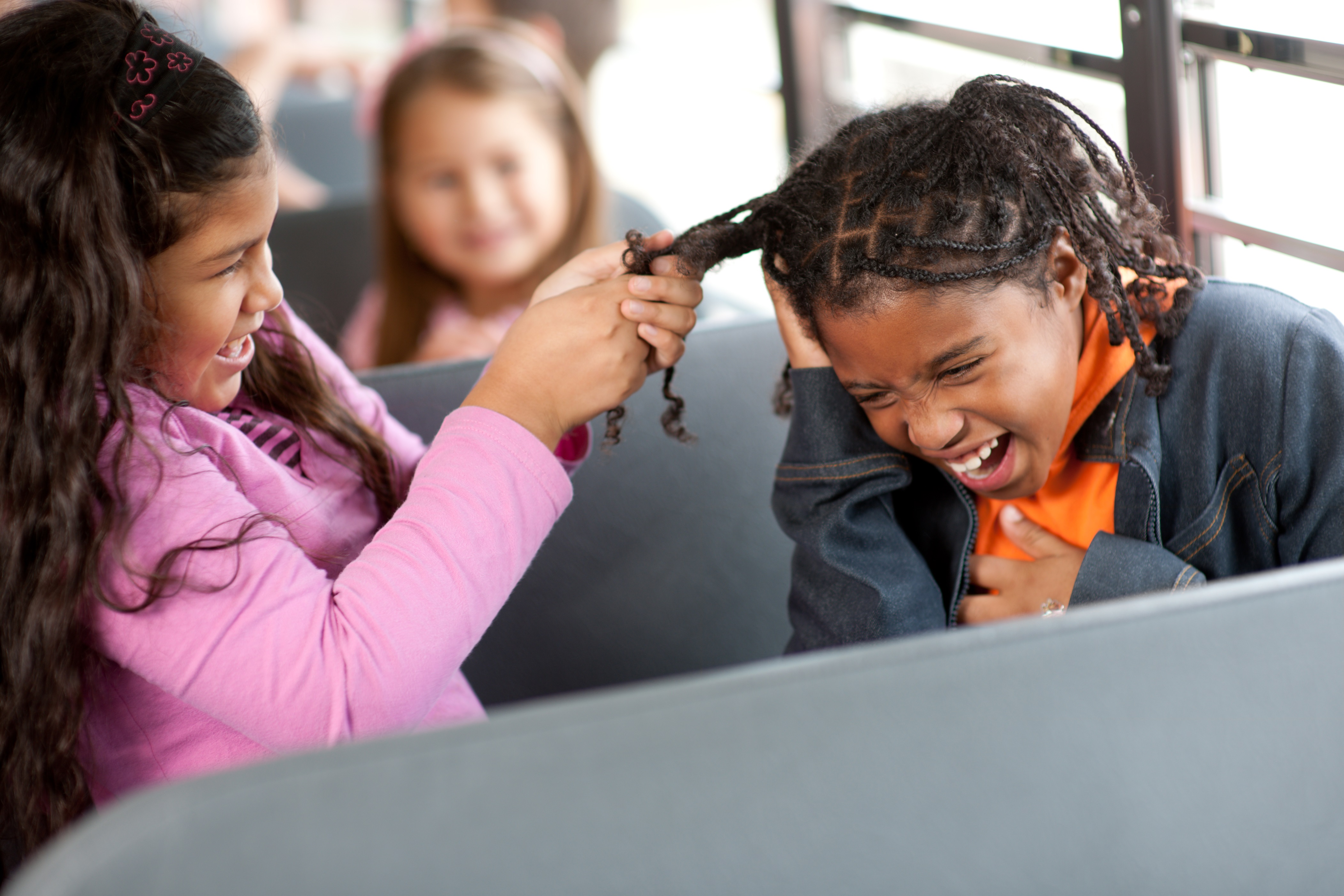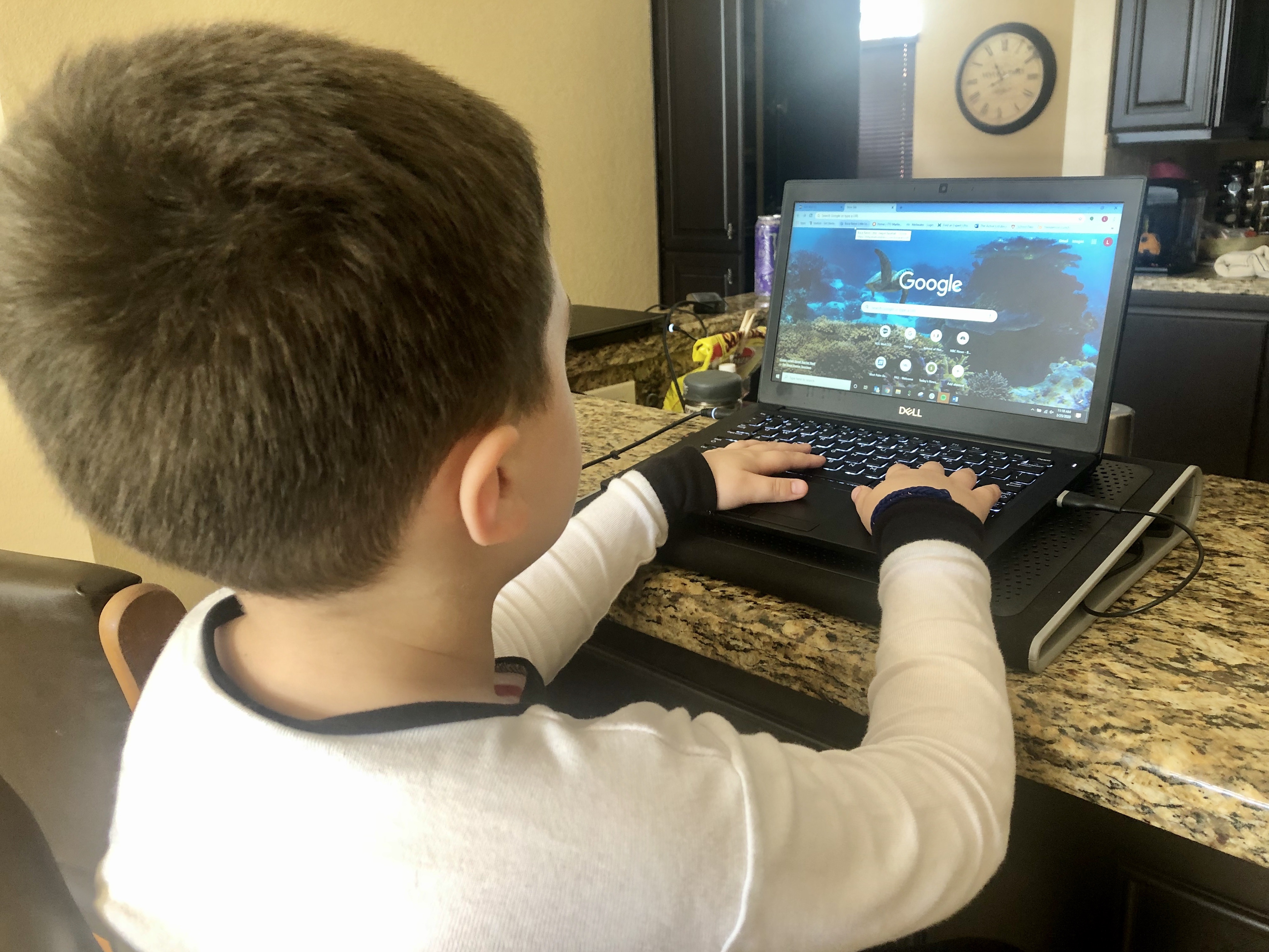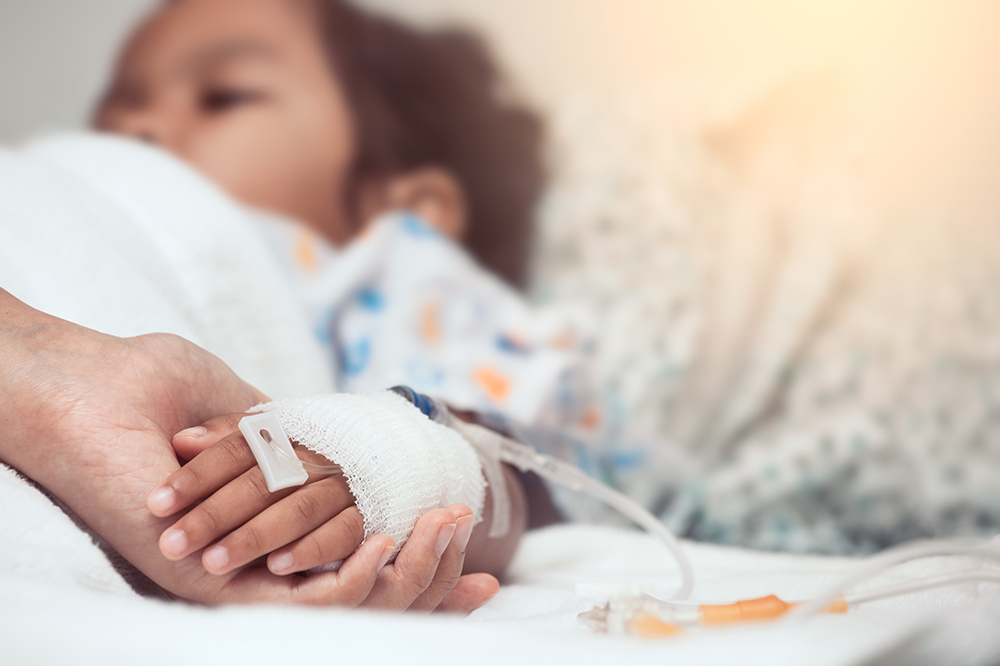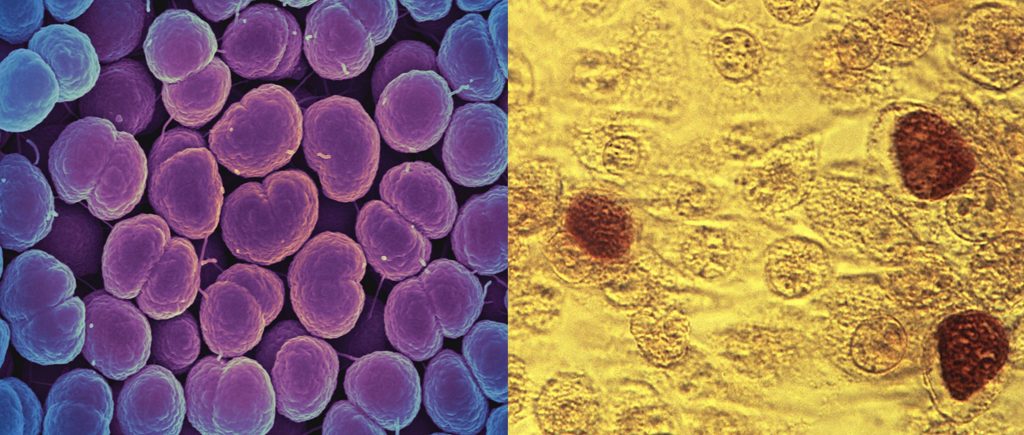Transition to middle school can be a stressful time for adolescents. They must adjust to a new peer group and social environment while going through the developmental changes of puberty.
Tag: Adolescents
Global study assesses teen vaping
In a study published in Addiction that analyzed 2015–2018 information from 47 countries, approximately 1 in 12, or 8.6%, of adolescents reported vaping in the past 30 days. Countries with higher tobacco taxes tended to have higher adolescent vaping.
Altered Brain Connection Found in Kids with Chronic Nausea and Dizziness
Children with chronic nausea and a condition known as orthostatic intolerance (OI) (dizziness when standing up) exhibit brain connectivity changes in areas related to sensory external and internal awareness resulting in over self-monitoring, according to a study published in the journal Neurogastroenterology & Motility.
New Study Shows Adolescent and Young Adult Cancer Survivors Face Increased Cancer Incidence and Mortality Risk
New findings led by researchers at the American Cancer Society (ACS) show that five-year survivors of adolescent and young adult (AYA) cancer in the United States have a higher risk of developing and nearly double the risk of dying from a new primary cancer as the general population.
Firearms now the top cause of death among children, adolescents, U-M data analysis shows
Firearms have surpassed motor vehicles as the leading cause of death among children and adolescents in the United States, according to new federal data analyzed by researchers at the University of Michigan.
Both Mothers and Friends Shape Adolescent Self-esteem
A new longitudinal study takes a deep dive into adolescent self-esteem and the role that parents – specifically mothers – and friends play in shaping how youth feel about themselves.
Adolescents are using social media to post about self-injury
Researchers found that posts with hashtags related to self-injury rose from between 58,000 to 68,000 at the start of 2018 to more than 110,000 in December.
Alcohol use among sexual minority adolescents is linked to discrimination and stigmatization
Sexual minority adolescents – lesbian, gay, or bisexual youth – are at an increased risk for substance use, including alcohol. A new study finds that discriminatory and stigmatizing experiences may be to blame. These results and others will be shared at the 44th annual scientific meeting of the Research Society on Alcoholism (RSA), which due to the COVID-19 pandemic will be held virtually this year from the 19th – 23rd of June 2021.
Study Identifies a Neural Signal that May Help Explain Social-Cognitive Ability in Autism
An electroencephalogram (EEG) study of adolescents with autism spectrum disorder (ASD) identified a neural signal that may help explain the variation of how those with ASD perceive or understand the mental states of others (called “Theory of Mind”).
Teens Experienced Helplessness When Exposed to Secondhand Racism, Activism Might Help
According to a qualitative study published in JAMA Network Open adolescents expressed feelings of helplessness when exposed to secondhand racism online. Specifically, adolescents described helplessness stemming from the pervasiveness of racism in our society.
Alarming Rising Trends in Suicide by Firearms in Young Americans
Researchers explored suicide trends by firearms in white and black Americans ages 5 to 24 years from 1999 to 2018. From 2008 to 2018, rates of suicide by firearms quadrupled in those ages 5 to 14 years and increased by 50 percent in those ages 15 to 24 years. Suicide deaths by firearms were more prevalent in white than black Americans – a marked contrast with homicide by firearms, which are far more prevalent in black than white Americans.

Miller School Study Highlights Importance of Psychological Screening for Adolescents with Hearing Loss
A new study led by a University of Miami Miller School of Medicine researcher underscores the importance of screening adolescents with hearing loss for depression and anxiety.
Research News Tip Sheet: Story Ideas from Johns Hopkins Medicine
During the COVID-19 pandemic, Johns Hopkins Medicine Media Relations is focused on disseminating current, accurate and useful information to the public via the media. As part of that effort, we are distributing our “COVID-19 Tip Sheet: Story Ideas from Johns Hopkins” every other Wednesday.
UNH Receives Nearly $3 Million to Research Effectiveness of Wilderness Therapy
The University of New Hampshire’s Outdoor Behavioral Healthcare Center will receive $2.97 million in grants to conduct a first-of-its-kind randomized study looking at the effectiveness of outdoor behavioral health (OBH), or wilderness therapy, a prescriptive treatment for teens struggling with depression, anxiety and substance use disorders.
Being Aware of How Social Media Affects Adolescents’ Body Image, During National Eating Disorder Awareness Week
As National Eating Disorder Awareness Week (Feb. 22-28) approaches, it’s important for parents to be aware of how social media affects adolescents’ body image. Linda Charmaraman, Ph.D., a senior research scientist and director of the Youth, Media and Wellbeing Research…

Mean or Nice? These Traits Could Make or Break a Child’s Friendships
While it’s logical to assume that children who are mean have friendships characterized by growing strife and that children who are nice report little of the same, these assumptions haven’t been tested in the real-world friendships. A study of elementary-school children is the first to examine the extent to which being “nice” and being “mean” shape changes in friend perceptions of their relationship. Results confirm the widespread assumption that one child’s behavioral traits drive the other child’s friendship experiences.
First-of-its-kind twin study at IU finds 50 percent greater risk of suicide attempts, self-harm in sexual minority adolescents
Adolescents who identify as gay, lesbian, bisexual or other sexual minority are twice as likely to attempt suicide or self-harm than adolescents who identify as heterosexual, according to a new study from Indiana University.
Recognizing signs of depression in teens as we head into a difficult winter
As National Depression and Mental Health Screening Month comes to a close, and health officials warn of a difficult pandemic winter ahead, it’s important for parents to know how to identify symptoms of depression in their teenagers — and what…
Frequent soft drink consumption may make adolescents more aggressive
Soft drink consumption is a likely predictor of aggressive behavior, according to a new study from UAB.A study from the University of Alabama at Birmingham has shown that frequent soft drink consumption by adolescents may contribute to aggressive behavior over time. Previous studies have shown associations between soft drink consumption and mental health problems in adolescents.

Who Could Benefit From Exercise and Behavioral Treatment?
Aerobic exercise clearly benefits young adults with major depression, and a Rutgers-led study suggests it may be possible to predict those who would benefit from behavioral therapy with exercise. Unique to this precision medicine study, published in the journal Psychological Medicine, is an assessment of cognitive control and reward-related brain activity, two facets of brain function that are impaired in people with depression. Like previous studies, this one showed that aerobic exercise helps young adults with major depression.

Research explores how youth are excluded from public spaces, design practices
America’s youth have historically been excluded from using public spaces how they want, in addition to being left out of design discussions. Including them in this process will have long-term societal benefits, according to an Iowa State University researcher.
High Reliance on Urgent Care Centers May Disrupt Primary Care in Children
A study of over 4 million children and adolescents in the U.S. enrolled in Medicaid found that those who rely on urgent care centers for more than a third of their outpatient health care needs had fewer visits to primary care providers. This may result in missed opportunities for preventative services, such as vaccinations, and identification and management of chronic conditions, such as obesity or asthma. Findings were published in JAMA Network Open.
Study Provides a Fresh Look at Mental Health Preparedness and Service Use Among Older Adolescents in Foster Care
Researchers interviewed hundreds of older adolescents in California shortly before their transition from the foster care system. Their use of mental health services is elevated, but not their sense that they feel prepared to manage their mental health.
Tips for Navigating the COVID-19 Crisis at Home with Teens, Young Adults
Compared to young children, teenagers and young adults living and learning at home during the COVID-19 crisis may be feeling the loss of social connections and life experiences while struggling to manage their time.
Ann Murphy, director of the Northeast & Caribbean Mental Health Technology Transfer Center (MHTTC) and an associate professor at Rutgers School of Health Professions, addresses how to navigate five key challenges.

Another Unintended Consequence of COVID-19: Cyberbullying Could Increase
School districts nationwide are now providing K-12 education online. Stuck at home all day, students will be using apps even more than they already do, which could cause an increase in cyberbullying among youth. Many cyberbullying targets will hesitate to get help from their parents and will suffer silently because they can’t readily stop by the guidance counselor’s office or chat with a teacher after class. A cyberbullying expert provides important tips and advice for teachers and parents.
National study finds diets remain poor for most American children; disparities persist
A study of national dietary trends over 18 years finds some improvements in the diets of U.S. children, but the majority still have a poor-quality diet. Disparities persisted or even worsened, finds the study published in JAMA and led by researchers at Tufts.
Teens Who Feel Empowered Are Less Likely to Bully, Harass, Commit Sexual Violence
Teens who feel personally empowered are less likely to bully, harass or commit acts of sexual violence, according to a study by Rutgers University, the University of Nebraska, and the University of New Hampshire.
Time of day differences in neural reward responsiveness in children
The Reward Positivity (∆RewP) event-related potential (ERP), generally quantified as the difference between neural responsiveness to monetary gains (RewP-Gain) and losses (RewP-Loss) is commonly used as an index of neural reward responsiveness. Despite the popularity of this ERP component in…

Cancer survival disparities in minority children, adolescents greater for more treatable cancers
Racial and ethnic minority children and adolescents with cancer have a higher risk of death than non-Hispanic white children and adolescents, with evidence for larger disparities in survival for more treatable cancers, finds a new study from the Brown School at Washington University in St. Louis.“The results suggest that there are modifiable racial and ethnic disparities in childhood cancer survival,” said Kim Johnson, associate professor and senior author of “Associations Between Race/Ethnicity and US Childhood and Adolescent Cancer Survival by Treatment Amenability,” published Feb.
How sleep helps teens deal with social stress
A first-of-its-kind study from Michigan State found that a good night’s sleep does adolescents good – beyond helping them stay awake in class. Adequate sleep can help teens navigate challenging social situations.
Many Teens are Victims of Digital Dating Abuse; Boys Get the Brunt of It
It’s almost Valentine’s Day, but there is nothing romantic about new research illuminating how teen dating abuse is manifesting online. A study of U.S. middle and high school students showed that 28.1 percent had been the victim of at least one form of digital dating abuse. More than one-third had been the victim of traditional dating abuse (offline). Boys in heterosexual relationships experienced all forms of digital dating abuse more than girls and were even more likely to experience physical aggression.

More Youth Suicide Found in Poor Communities Across U.S.
A study led by Jennifer Hoffmann, MD, from Ann & Robert H. Lurie Children’s Hospital of Chicago, found that higher county-level poverty is associated with increased youth suicide rates among children 5-19 years old in the United States in 2007-2016. Children and adolescents from counties where 20 percent or more of the population lives below the federal poverty level were 37 percent more likely to die by suicide, compared to communities with the lowest poverty concentration. Youth suicide by firearms was 87 percent more likely in areas with the highest poverty levels. Findings were published in JAMA Pediatrics.

It’s 2020: Time to Teach Teens ‘Safe’ Sexting
Telling youth not to “sext” doesn’t seem to be reducing the prevalence of them sharing nude photos or videos. A national sample of about 5,000 youth ages 12 to 17 showed 14 percent had sent and 23 percent had received sexually explicit images. Researchers say it’s time to teach teens ‘safe’ sexting and provide important tips to avoid significant and long-term consequences, such as humiliation, extortion, victimization, school sanction, reputational damage, and even criminal charges.
Starting drinking young predicts hospital admission for acute intoxication
In studies, younger age at first alcohol use has been associated with later alcohol problems in adult life, including heavy drinking and alcohol use disorder. That is the reason why around the world, as in the Netherlands, a key aim of alcohol policy is to postpone the age at first alcohol use. In a report published in the journal Alcoholism: Clinical and Experimental Research, researchers from the Netherlands have investigated whether age of drinking onset is a risk factor for alcohol intoxication among adolescents aged under 18 years.
‘Junk Food’ Diet May Predict Future Depression Symptoms in Teens
An innovative study finds that sodium and potassium levels—reflections of a person’s typical diet—may be predictors of future depression in teens. The first-of-its-kind study is published in Physiological Reports.

Visits + Phones = Better Outcomes For Teens, Young Women With Pelvic Inflammatory Disease
A patient-centered, community-engaged program featuring home visits by nurses and mobile phone links to caregivers works better than traditional adult-focused and patient self-managed care systems for treating and managing pelvic inflammatory disease, or PID, among historically underserved teens and young women, a Johns Hopkins Medicine study shows.